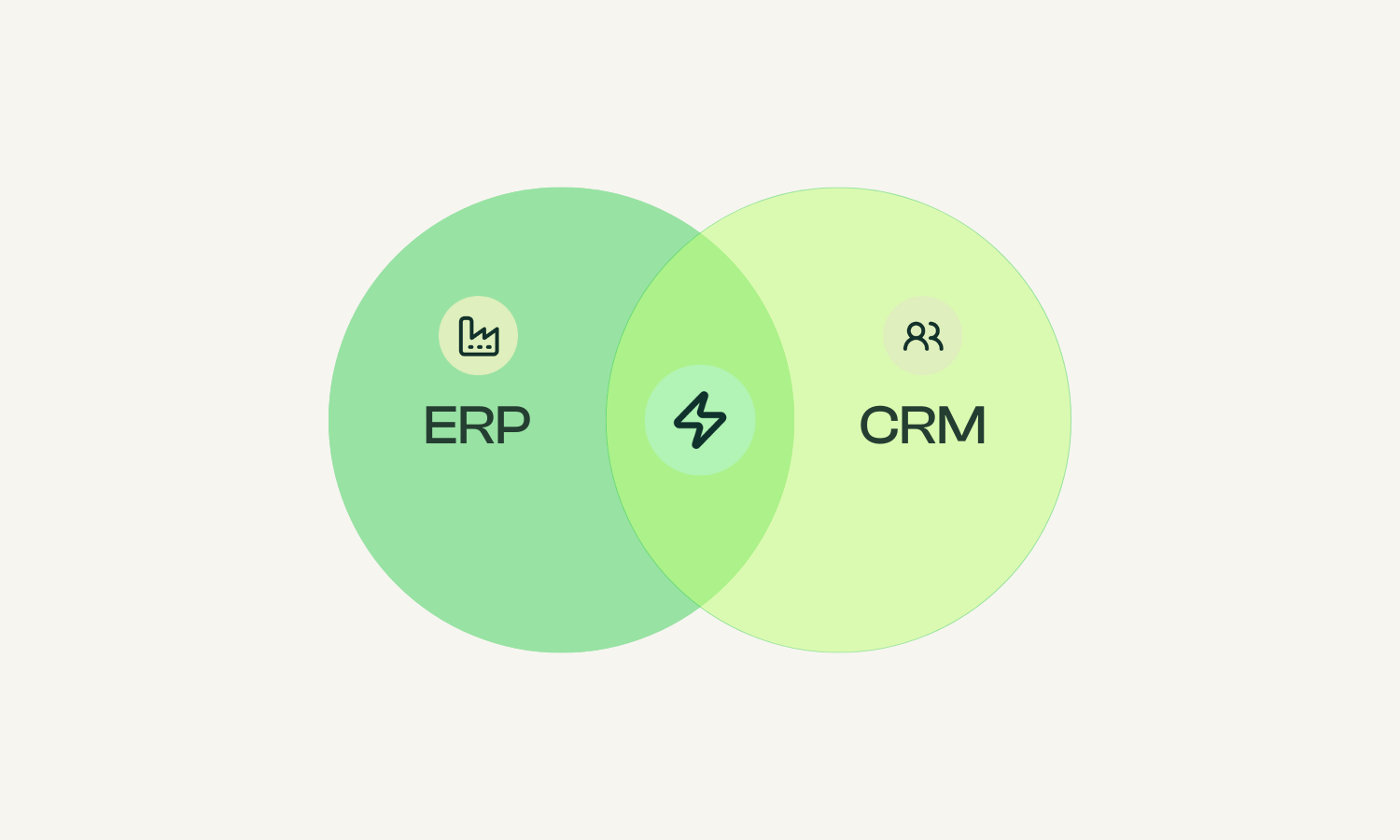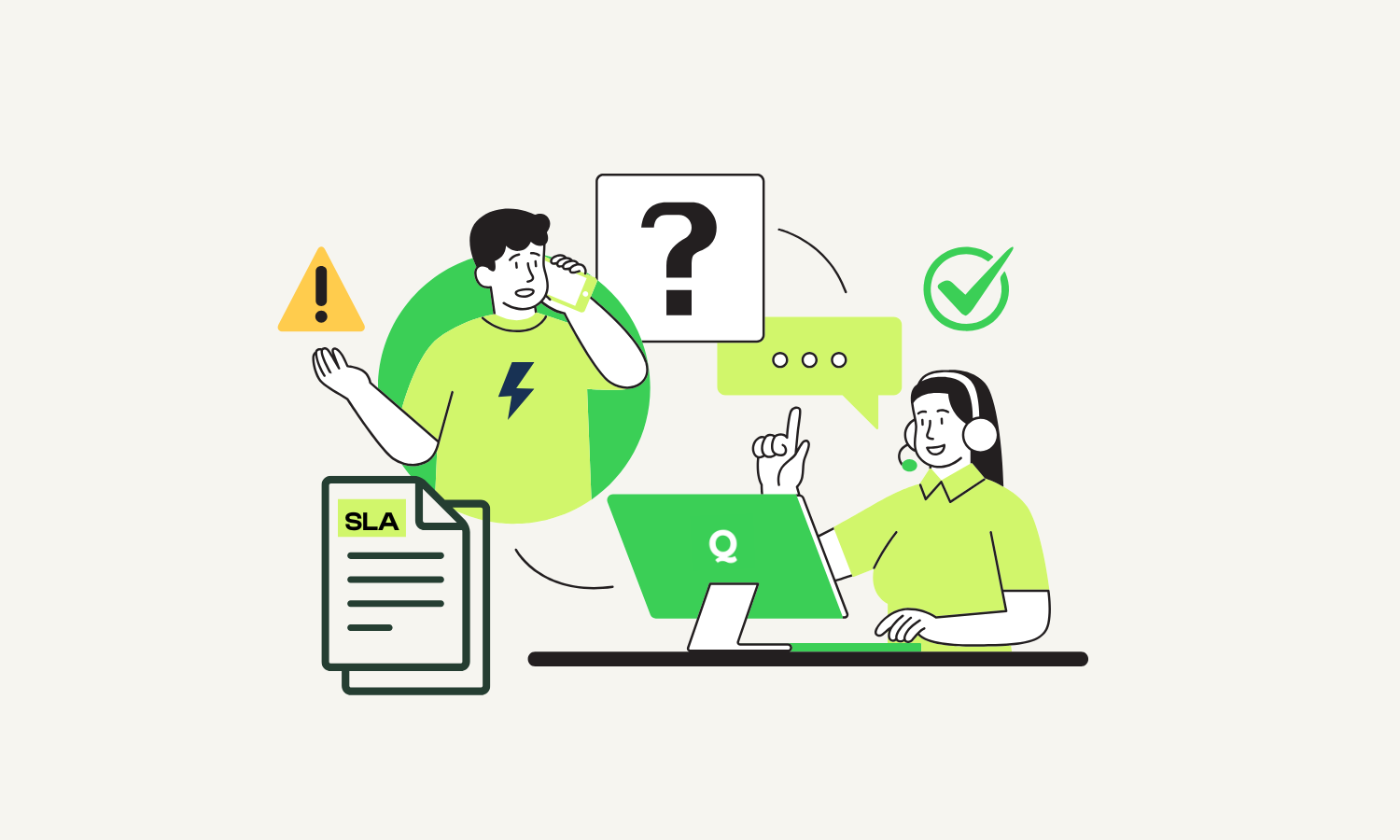Do ERP and CRM mean the same thing?
This is one of the most common questions we hear from teams at energy retailers, especially from those in the process of digital transformation or seeking to modernize their systems. While these terms may sound similar, their role in daily operations and their impact on efficiency are actually very different.
Let’s start with a practical example:
Imagine you are a manager at an energy retailer. Your sales team is negotiating new offers, while the operations team needs to ensure contracts are processed correctly, invoices are generated, and everything complies with current regulations.
Without good organization, this workflow can turn into a maze of emails, calls, Excel files, and duplicated tasks. Sales creates offers, but operations needs to validate the data and issue the invoices. If something goes wrong—an incorrect field, an invalid supply point (CUPS), or an unsigned contract—the result is delays, errors, unsatisfied customers, and wasted work hours.
This situation is very common for energy retailers who aren’t clear about the purpose of each system or try to manage everything from a single tool. Here is where truly understanding and integrating ERP and CRM makes all the difference.
What is an ERP?
The ERP (Enterprise Resource Planning) is the "operational brain" of the company. This is the system responsible for centralizing and automating internal management, such as:
- Automated invoicing
- Collections and direct debits
- Consumption and meter management
- Distributor messaging (ATR)
- Official reporting for the CNMC and other authorities
The ERP software for Energy ensures that internal processes are efficient, regulatory compliance is met, and no time is lost on manual tasks. For example, if your team needs to generate hundreds of monthly invoices, ensure they are collected correctly, and send official files to the CNMC, all of that is managed in the ERP.
What is a CRM?
The CRM (Customer Relationship Management) is the "relationship center" of the retailer. This is where all customer and agent interactions are managed, such as:
- Configuring sales offers
- Managing contracts and renewals
- Tracking sales opportunities
- Customer portal (self-service, inquiries, support)
- Channel and commission management
- Proactive communications with customers and partners
The CRM software for Energy helps attract customers, follow up on sales, automate communications, and, above all, deliver fast, personalized service. For example: if an agent wants to check pending offers, send a tailored proposal, or manage a renewal, they do it in the CRM.
Comparison Table
Where do they overlap?
There are processes that require information from both the ERP and the CRM:
- Onboarding a new customer: The CRM manages the offer and contract, but the ERP validates the data and activates the customer.
- Billing: The CRM can simulate the impact of an offer or renewal, but actual billing is handled by the ERP.
- Customer and data management: The CRM centralizes relationships, but the ERP stores financial and operational history.
That’s why many retailers think one system is enough… until problems start to arise:
- Task and data duplication.
- Errors when transferring information between systems.
- Lack of clear visibility into the full customer lifecycle.
Why is it crucial to have both systems integrated?
True integration between ERP and CRM—like what we offer at QUIXOTIC—delivers:
- Less friction and fewer errors: No need to copy data; everything flows automatically.
- 360º customer view: Both sales and operations teams can instantly see everything from the initial offer to invoice collection.
- Automation and agility: Automatic validations, contract generation, billing simulations, and proactive communication, all connected.
- Unified teams: Everyone works from the same data, each with tools adapted to their daily needs.
A practical day-to-day example
Imagine:
- A sales agent creates a custom offer in the CRM.
- The customer accepts; the contract is generated and the system automatically validates all necessary information (CUPS, ownership, etc.).
- The ERP receives the data, creates the customer in the system, manages activation, and schedules invoicing.
- Any incident (unpaid bill, renewal, change in conditions) is managed from the CRM, with real-time access to ERP data.
The result:
- The customer enjoys a smooth, error-free experience.
- Sales and operations teams save time and avoid rework.
- Managers have a clear, real-time business overview for better decision-making.
Our approach: native integration, no complications
At QUIXOTIC, we designed our ERP and CRM for energy from the ground up, focusing on the specific needs of energy retailers. Both systems are natively integrated:
- No duplication
- No complex or custom-built integrations
- A unified experience, always up-to-date with current regulations
This translates to less friction, more agility, fewer errors, and much clearer business insight, without relying on multiple providers or disconnected systems.
ERP and CRM are different but complementary. In the energy sector, having both—fully integrated—not only eliminates problems but multiplies efficiency and growth potential for your retailer.
Want to see how it works in practice?
Request a demo and discover how QUIXOTIC can transform your company’s management and growth.
.svg)


















